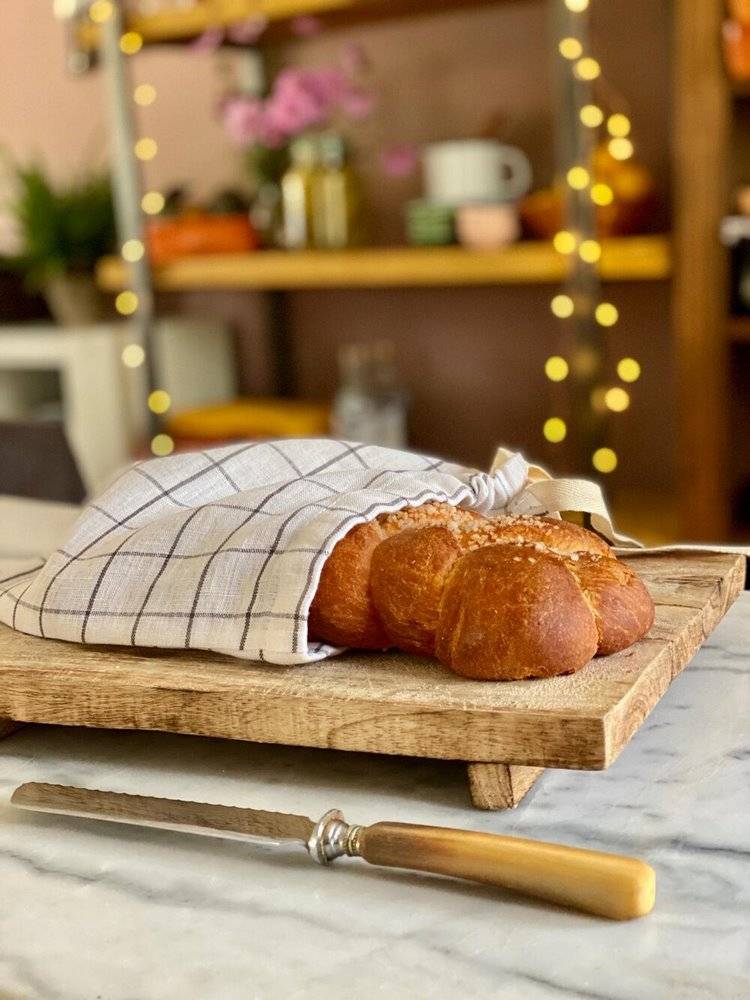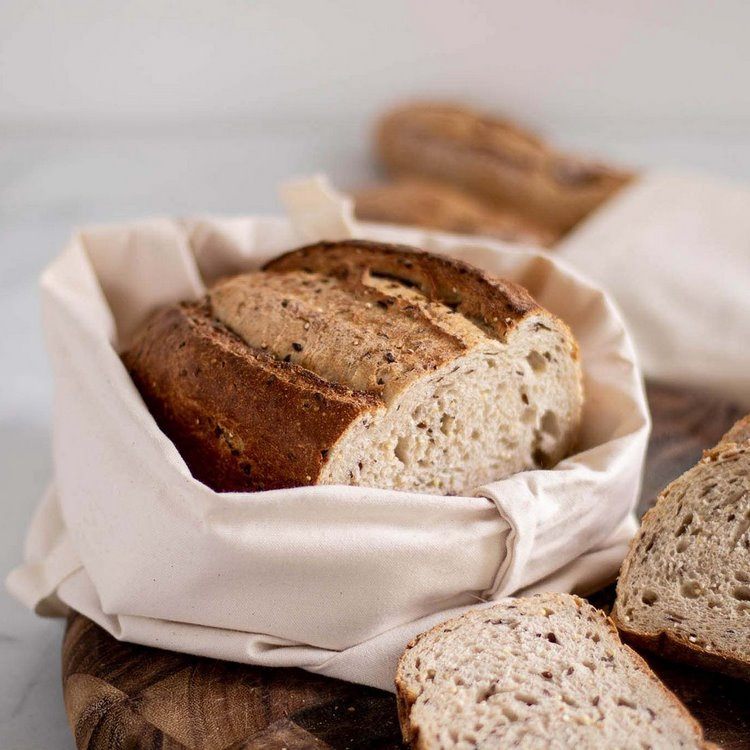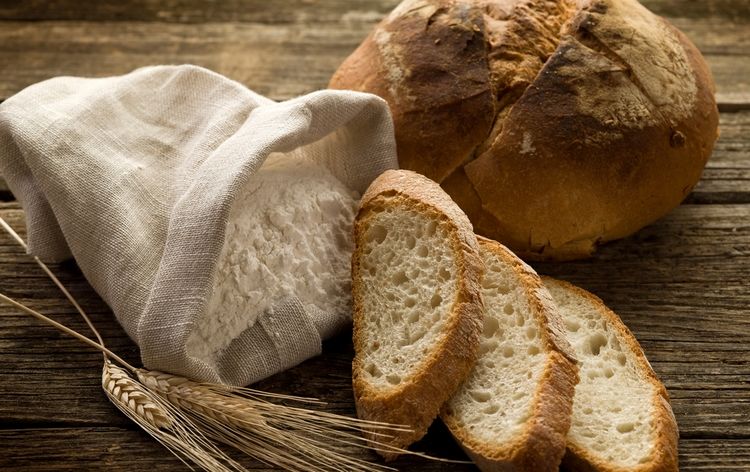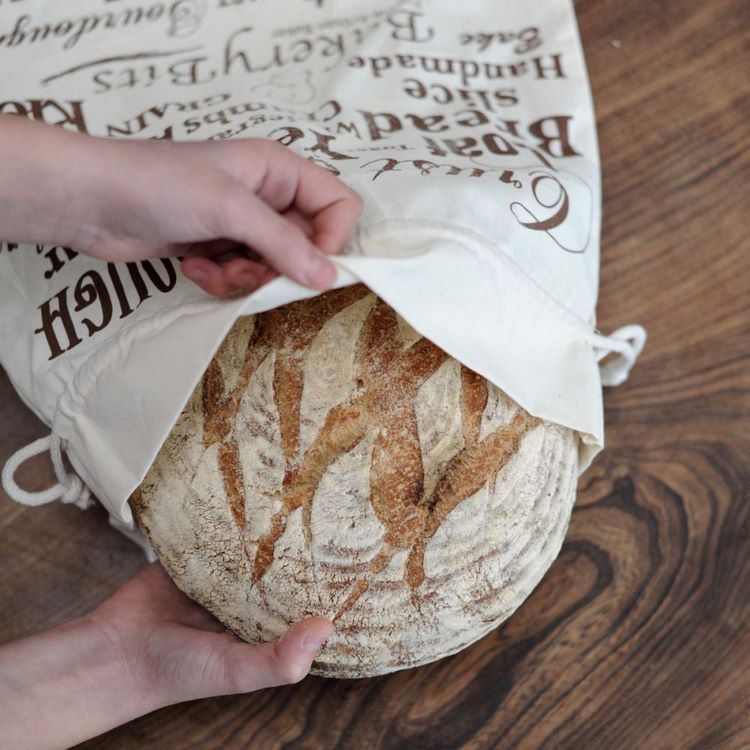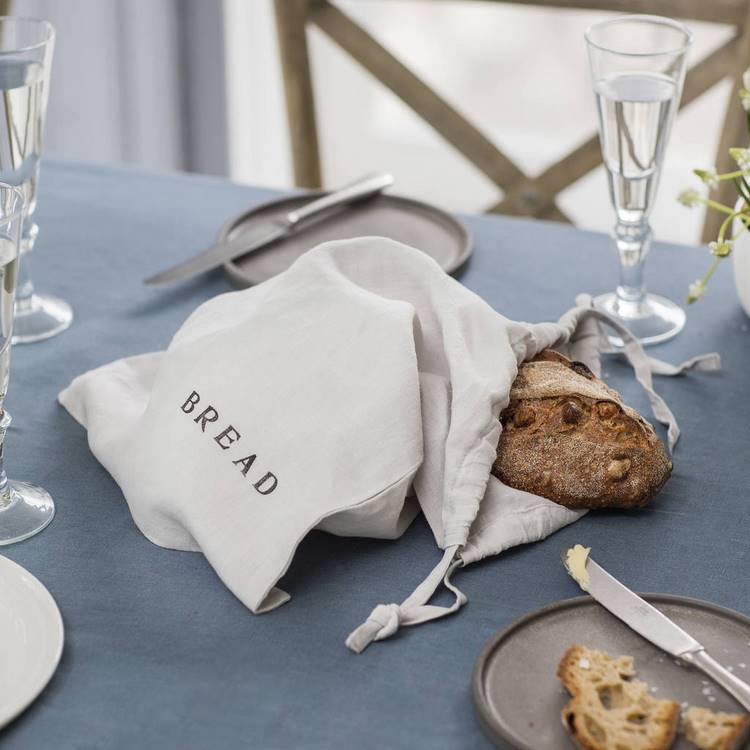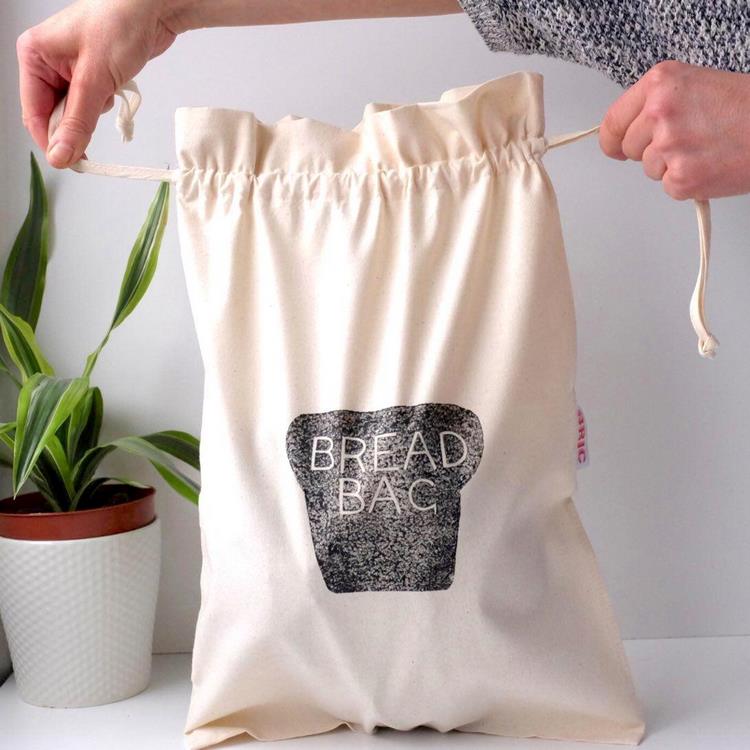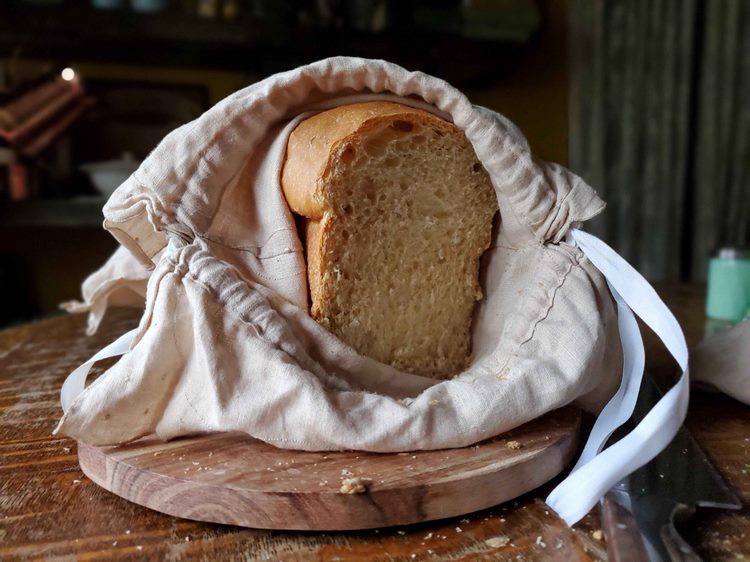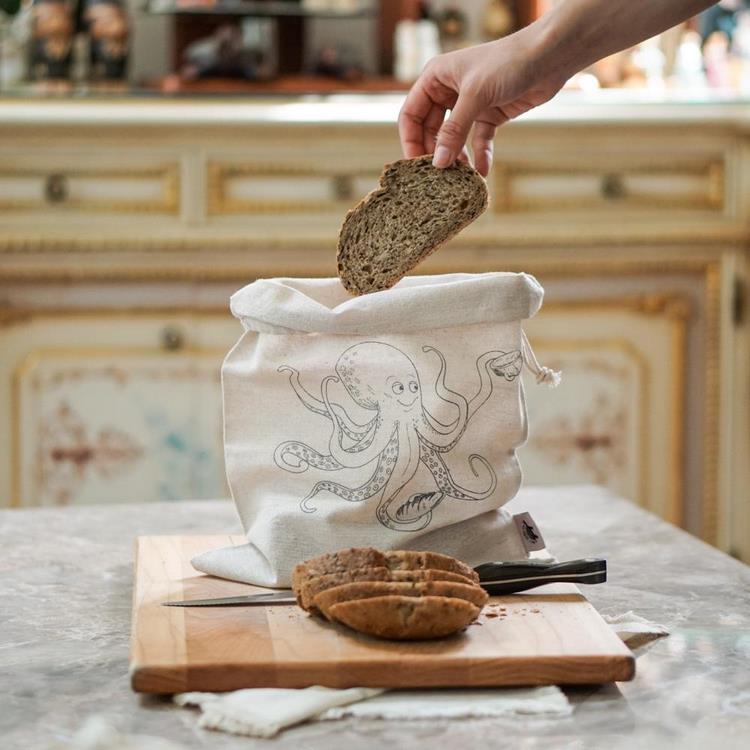How to store bread properly? Many people store bread in the refrigerator, others use bread boxes and there is a very large group of people who will tell you that the best way to store bread is to use linen bread bags.
The aroma and taste of freshly baked bread is incomparable! People who bake bread at home don’t do it for the sake of economy or passion for a healthy lifestyle. Of course, these factors are important, but still the key is something else – the incredible energy that comes from a loaf of homemade bread! Even those of you who prefer to buy their bread from a bakery instead from a supermarket know that there is a huge difference in flavor, taste and… emotion! The sound of the knife cutting through the crust, the aroma and taste – well, people have been baking bread for millennia and even nowadays, this is one of the main foods.
When we talk about proper bread storage, our goal is that it remains fresh and tasty for a long time. Generally speaking, fabric bags made of natural material will help prevent the appearance of mold and staleness of bread, as well as preserve its freshness and flavor. You can buy a bread bag or sew it yourself. Either way, using a textile bag is convenient, practical and environmentally friendly.
Reusable linen bread bags advantages
Textile bread bags are a continuation of the old tradition of wrapping bread in a plain linen or canvas towel or decorated with embroidery on special occasions and holidays. Many years of experience have established that if the bread is wrapped in clean cloth, the loaf retains its quality for up to 7 days. As you see, traditions are eternal and we are re-inventing them.
The truth is that nowadays people start realizing that there is too much plastic waste and the zero waste movement is getting stronger. There are so many zero waste kitchen storage ideas and reusable linen bread bags are just one of the options to eliminate plastic waste.
What are the advantages of linen bread bags and how do they work? Keeping baked goods in textile eco-bags is not just an environmental responsibility. Natural materials have many advantages:
- They are inexpensive and reusable. This significantly reduces costs;
- Natural fabrics are of high quality and pleasant to the touch;
- bread bags come in different sizes and colors and can store ordinary loaves, toast bread and even French baguettes;
- Keep bread from drying out;
- Bread bags are breathable, they allow air to pass through and retain moisture;
- They can be hung on a hook off the counter which saves space;
- Can be used in the pantry to store beans, grains, and other dry goods;
- They are easy to wash and iron – the fabric can withstand many wash cycles without losing its shape and color;
- Eco-friendly bread bags are a very nice and stylish item for everyday life. A beautiful bread bag will be useful at home, on a trip, at a picnic, and even decorate a festive table. It is also a wonderful gift for your family and friends who respect the environment.
How to choose and use fabric bread bags?
The market offers linen and cotton bags for storing bread. Models are available in different colors, fabric composition, with or without prints. Cotton bags are cheaper than linen bags. What are the differences between cotton and linen?
- On the first place, it is the durability of the material. Cotton is more stretchy but not as durable as linen.
- Cotton is softer and smoother to the touch while linen is much more rigid and rough, but lasts longer.
- Due to the fact that they are made of from natural fibers, both cotton and linen wrinkle easily.
- Both materials are hypoallergenic. Experts recommend linen as a better choice for people allergies because due to the lower thread count and the loose weave it less likely to trap dust and particles.
- Both cotton and linen fabric are breathable.
- When you store bread in fabric bags you do not need to use any without additional packaging like polyethylene, paper, etc. To keep your baked goods fresh for a long time, you should pay attention to the rules for using textile bags.
- Do not store different types of baked goods in one bag. For example, do not put white and rye bread in one and the same bag. Rye bread is moister and has a more pronounced flavor than white bread.
- Do not store gluten-free breads in fabric bags. They cannot be stored for a long time. The maximum shelf life for gluten-free baked goods is 2-3 days.
- Remove any crumbs thoroughly and dry the inside of the bag before each use.
Choosing environmentally friendly products for your everyday life, you not only save the environment, but also take a responsible attitude towards your health and the health of your loved ones. Eco-friendly bread bags keep baked goods fresh for a long time and the properties of natural fabrics prevent the growth of pathogenic bacteria.
How to take care for your linen bag?
Linen bread bags are easy to clean. They can be washed in the washing machine or simply rinsed and dried. Do not wash the bag with fragrant detergents, otherwise your bread will absorb the scent. Wash in warm water – temperature up to 30 C. When washing, do not use products containing bleach (chlorine). Hang your linen bread bags out to dry or put in the dryer. Take them out while still a bit damp and iron it with a steam iron.
DIY Reusable linen bread bag instructions
To sew a bread bag, you will need a piece of natural fabric (linen is ideal, thick cotton will also work) for the outside of the bag and about the same piece for the inside. Use ribbons, matching lace, suitable embroidery for decoration – a fabric bag is an opportunity to show all your creativity, to create something unique, unusual and interesting! The easiest way to sew a bread bag is to use two linen napkins. Lay the napkins together evenly and sew the two pieces together using a basic stitch. If you do not have napkins at hand, any piece of linen fabric will do.
Depending on the type of bread, you may need bags of different sizes. Here are the finished sizes of common linen bread bags:
- Baguettes and Challah – 17″ x 12″ (43×30 cm)
- Boules – 12″ x 12″ (30×30 cm)
- Sandwich loaves – 15″ x 12″ (38×30 cm)
You will need:
- Sewing machine
- Scissors
- Thread to match your fabric
- 100% linen fabric
- ribbon, braided seine twine, heavy jute string or else of your choice
Instructions:
Wash and iron the linen fabric.
Fold over the top edge of the fabric toward you, three-quarters of an inch (2 cm). Pin in place and press. Stitch close to the edge of the fabric, away from the fold, to make a casing for the string. Leave the ends open.
To stitch the bottom and side seams, fold the fabric right sides together, with the stitched casing at the top. Pin the bottom edge and the open side edge together. Begin at the bottom corner, at the fold line. Stitch along the bottom edge allowing ¼ inch seam. Turn the work and continue stitching up the open side, stopping just before the casing.
Open the bread bag right side out and steam press the seams. Trim any lose threads. Use a pin to pull out the corner edge to make crisp corners. Press the corners of the linen bread bag.
Topstitch on the right side, ¼” from the finished edge. Begin on the folded edge, just after the casing. Top stitch around the bag, across the bottom and on the stitched side, stopping just before the casing starts. Leave the casing free of stitching.
Cut a ribbon or thick piece of seine twine. Using a large safety pin, pull the ribbon through the casing at the top of the linen bag. Stop before you’ve pulled it all the way out. You’ll have two ends with the middle part inside the casing. Take the two ends of the twine and tie them with an overhand knot.

